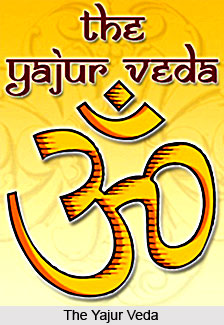 The exact period in of the origin of Brahmana literature is rather hard to determine. The only certainty is that the Samhita of the Rig Veda was already concluded; the magic incantations, spells and formulae of the Atharva Veda and of the Yajur Veda, as well as the melodies of the Sama Veda too had been concluded and are older than the speculations of the Brahmanas. However, its is also likely that the final compilation of the Samhitas of the Atharva Veda and of the liturgical Samhitas was about contemporaneous with the beginnings of the Brahmana literature, so that the latest portions of these Samhitas might be of the same date as the earliest portions of the Brahmanas. On the other hand it is likely that the final compilation of the Samhitas of the Atharva Veda and of the liturgical Samhitas was about contemporaneous with the beginnings of the Brahmana literature, so that the latest portions of these Samhitas might be of the same date as the earliest portions of the Brahmanas. At least the geographical and cultural conditions indicate this, as they are represented on the one hand in the Samhitas of the Atharva Veda and Yajur Veda, and on the other hand in the Brahmanas, in comparison with those of the Rig Veda.
The exact period in of the origin of Brahmana literature is rather hard to determine. The only certainty is that the Samhita of the Rig Veda was already concluded; the magic incantations, spells and formulae of the Atharva Veda and of the Yajur Veda, as well as the melodies of the Sama Veda too had been concluded and are older than the speculations of the Brahmanas. However, its is also likely that the final compilation of the Samhitas of the Atharva Veda and of the liturgical Samhitas was about contemporaneous with the beginnings of the Brahmana literature, so that the latest portions of these Samhitas might be of the same date as the earliest portions of the Brahmanas. On the other hand it is likely that the final compilation of the Samhitas of the Atharva Veda and of the liturgical Samhitas was about contemporaneous with the beginnings of the Brahmana literature, so that the latest portions of these Samhitas might be of the same date as the earliest portions of the Brahmanas. At least the geographical and cultural conditions indicate this, as they are represented on the one hand in the Samhitas of the Atharva Veda and Yajur Veda, and on the other hand in the Brahmanas, in comparison with those of the Rig Veda.
In the period of the Atharva Veda Samhita, Aryan tribes of the Indus land, the home of the Rig Veda, had already spread themselves further east into the region of the Ganga River and the Yamuna River. The region which is indicated by the Samhitas of the Yajur Veda as well as by all the Brahmanas, is the land of the Kurus and Panchalas, two tribes whose mighty battles form the nucleus of the great Indian epic, the Mahabharata. Kurukshetra, "the land of the Kurus," in particular, is regarded as a holy land, in which, as it is frequently put, the gods themselves celebrated their sacrificial feasts. This part of India, the Doab between Ganga and Yamuna from the neighbourhood of Delhi to as far as Mathura, is still in a later period, regarded as the actual "Brahman land" (Brahmavarta), whose custom, according to the Brahmanical law-books should be adopted for the whole of India. This region is not only the land of the origin of the Samhitas of the Yajur Veda and of the Brahmanas, but also the home of the whole of Brahmanical culture, which first spread from here over the whole of India.
Already in the Brahmanas the way is prepared for that great movement to which Buddhism owes its origin: for it cannot be questioned that the old and genuine Brahmanas belong to the Pre-Buddhist period. While in the Brahmanas not the least trace is shown of any acquaintance with Buddhism, the Buddhist texts pre-suppose the existence of a Brahmana literature. It can therefore be said upon good grounds that the centuries in which the Liturgical Samhitas and the Brahmanas originated must fall into the period after the conclusion of the hymn-composition and the Rig Veda Samhita and before the appearance of Buddhism.



















